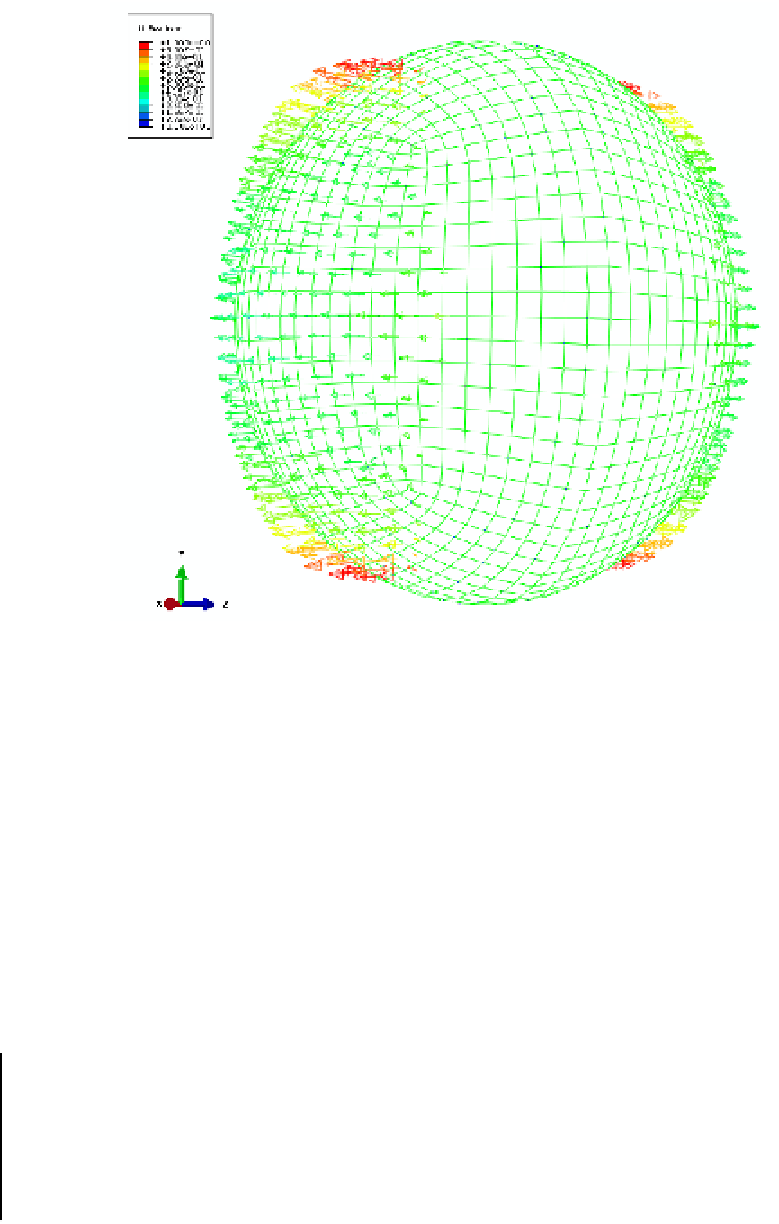Biomedical Engineering Reference
In-Depth Information
Fig. 17. Mode replacing the twisting mode when flesh Young's modulus is 1.5MPa
2.2.3 Experimental modal analysis of the fruit
Experimental modal analysis is a technique to obtain natural frequency, mode shapes and
damping ratios of an elastic structure by application of a vibrational stimulus to the sample
and sensing the resulting vibration at various locations on the sample surface. This section
illustrates an experimental modal analysis on a melon fruit (Ehle, 2002). The excitation was a
pulse force delivered by an impact hammer. A force transducer at the tip of the hammer
measured the force. An accelerometer was used to measure the acceleration response at
several points all over the surface of the melon. The measurement points were designed to
follow a grid pattern where the distances between adjacent points were almost uniform
throughout the surface of the fruit. The melon most closely resembled a sphere. Table 2 and
Fig. 18 show the measurement points. A tri-axial accelerometer must be used to sense the
important torsional mode (Fig. 8) as well as radial motions.
Layer
1
2
3
4
5
6
7
8
9
Points
1
2-7
8-19
20-37
38-55
56-73
74-85
86-91
92
Longitudinal
Angle (deg)
45
90
67.5
22.5
0
-22.5
-45
-67.5
-90
Latitudinal
Angle (deg)
N/A
60
30
15
15
15
30
60
N/A
Table 2. Locations of the points where acceleration was measured on the melon.

















